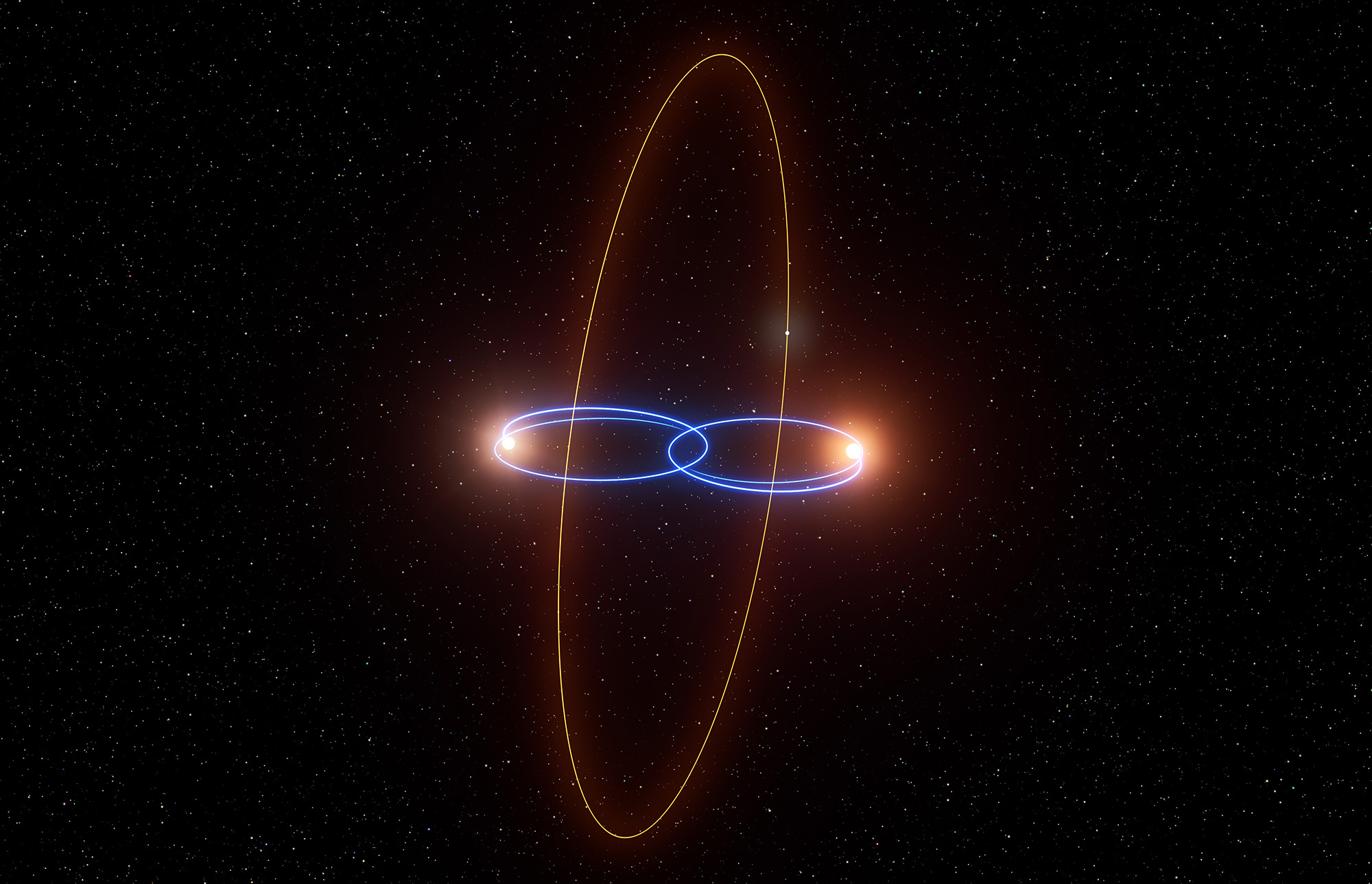Astronomers have found a planet that orbits at an angle of 90 degrees around a rare pair of peculiar stars. This is the first time we have strong evidence for one of these ‘polar planets’ orbiting a stellar pair. The surprise discovery was made using the European Southern Observatory’s Very Large Telescope (VLT).
Several planets orbiting two stars at once, like the fictional Star Wars world Tatooine, have been discovered in the past years. These planets typically occupy orbits that roughly align with the plane in which their host stars orbit each other. There have previously been hints that planets on perpendicular, or polar, orbits around binary stars could exist: in theory, these orbits are stable, and planet-forming discs on polar orbits around stellar pairs have been detected. However, until now, we lacked clear evidence that these polar planets do exist.

“I am particularly excited to be involved in detecting credible evidence that this configuration exists,” says Thomas Baycroft, a PhD student at the University of Birmingham, UK, who led the study published today in Science Advances.

The unprecedented exoplanet, named 2M1510 (AB) b, orbits a pair of young brown dwarfs — objects bigger than gas-giant planets but too small to be proper stars. The two brown dwarfs produce eclipses of one another as seen from Earth, making them part of what astronomers call an eclipsing binary. This system is incredibly rare: it is only the second pair of eclipsing brown dwarfs known to date, and it contains the first exoplanet ever found on a path at right angles to the orbit of its two host stars.
“A planet orbiting not just a binary, but a binary brown dwarf, as well as being on a polar orbit is rather incredible and exciting,” says co-author Amaury Triaud, a professor at the University of Birmingham.
The team found this planet while refining the orbital and physical parameters of the two brown dwarfs by collecting observations with the Ultraviolet and Visual Echelle Spectrograph (UVES) instrument on ESO’s VLT at Paranal Observatory, Chile. The pair of brown dwarfs, known as 2M1510, were first detected in 2018 by Triaud and others with the Search for habitable Planets EClipsing ULtra-cOOl Stars (SPECULOOS), another Paranal facility.
The astronomers observed the orbital path of the two stars in 2M1510 being pushed and pulled in unusual ways, leading them to infer the existence of an exoplanet with its strange orbital angle. “We reviewed all possible scenarios, and the only one consistent with the data is if a planet is on a polar orbit about this binary,” says Baycroft.

“The discovery was serendipitous, in the sense that our observations were not collected to seek such a planet, or orbital configuration. As such, it is a big surprise,” says Triaud. “Overall, I think this shows to us astronomers, but also to the public at large, what is possible in the fascinating Universe we inhabit.” (ESO)








You must be logged in to post a comment.